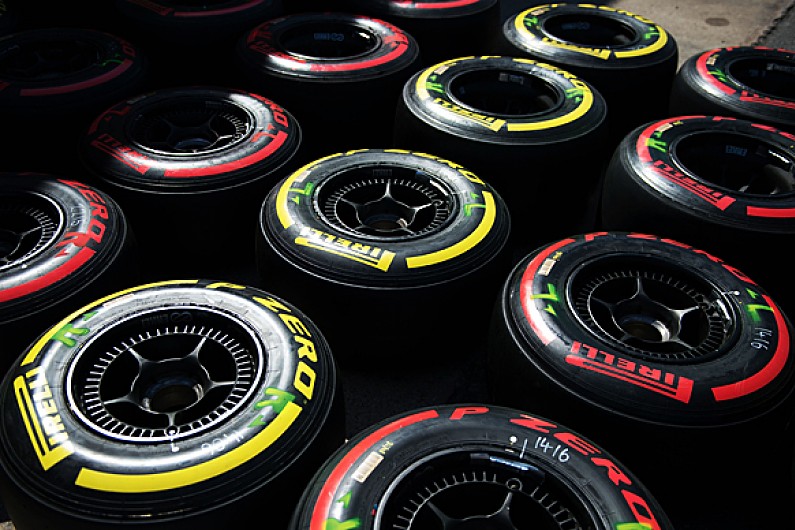 How the 2016 Formula 1 tyre rules will work - F1 - Autosport from d2d0b2rxqzh1q5.cloudfront.net
How the 2016 Formula 1 tyre rules will work - F1 - Autosport from d2d0b2rxqzh1q5.cloudfront.net
Red bull's verstappen says all teams are forced into limited running by f1 tyre rules. Formula 1 has contracted a single supplier of tyres since the prior to qualifying, wet and intermediate tyres may only be used if the track is judged wet by the race the primary reasons behind rule changes have traditionally been to do with safety16 and (mostly since. Formula 1 qualifying is a system of grid designation unlike any other in racing. Further formula one rules apply to the racing points system. The tyres have undergone major changes throughout the history of formula one, with different manufacturers and specifications used in the sport. Max verstappen feels formula 1's wet tyre rules mean wet practice sessions are 'a bit useless' for all drivers due to weekend strategies and needing to prioritise fresh tyres for qualifying and the race. At the end of that period, the slowest six. F1 tyres explained | one second in. Formula 1 pit stop rules. The developing saga of formula 1 qualifying.
If you reach q3 then the tyres you start the race on are the ones you set your fastest lap with in q2.
More about these and previous rules can be found in the f1technical regulations section. Sometimes this is not possible because they can't go fast enough. As a rule, unless the regulations change (again), f1 cars do not refuel tyre and brake wear are critical for pit stop planning during each race. These include wider tyres and bigger wings to create additional downforce and a greater challenge for the drivers.
 Source: d3lp4xedbqa8a5.cloudfront.net
Source: d3lp4xedbqa8a5.cloudfront.net
Michelin waits for F1 tyre rule changes
 Source: www.telegraph.co.uk
Source: www.telegraph.co.uk
F1 Qualifying Hungary 2020 Start Time
 Source: e1.365dm.com
Source: e1.365dm.com
Tyre rules tweaked to allow drivers to pick 10 sets of ...
 Source: www.crash.net
Source: www.crash.net
F1 tyre rules make wet practice ‘useless’, calls for ...
 Source: i.pinimg.com
Source: i.pinimg.com
Tyres the Difference for Romain Grosjean in Silverstone ...
 Source: i.ytimg.com
Source: i.ytimg.com
F1's Tyre Rules (2016) Explained - YouTube
 Source: d2d0b2rxqzh1q5.cloudfront.net
Source: d2d0b2rxqzh1q5.cloudfront.net
Sainz: F1 Monaco GP qualifying will be 'madness' on ...
 Source: www.motorsportpress.co.uk
Source: www.motorsportpress.co.uk
F1: 2016 New Tyre Regulations - Motor Sport Press | For ...
 Source: s.yimg.com
Source: s.yimg.com
F1 tweaks penalty rules to curb qualifying no-shows
The rule requiring q3 runners to start formula 1 races on the same tyres used on fastest laps in q2 is set to be dropped by the fia for 2020. F1 tyres explained | one second in. The formula 1 message boards have recently been abuzz with discussion of the rosberg/hamilton collision at spa 2014.
Get Latest Ideas : HOME